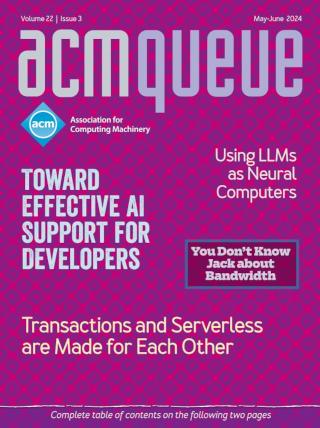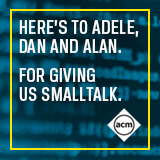Chip Measuring Contest:
The benefits of purpose-built chips
Alan Kay once said, "People who are really serious about software should make their own hardware." We are now seeing product companies genuinely live up to this value. It is exciting when the incumbents known as the chip vendors are being outdone, in the very technology that is their bread and butter, by their previous customers. Let's dive into some of the interesting bits of these purpose-built chips: the benefits of economics, user experience, and performance for the companies building them.
A New Era for Mechanical CAD:
Time to move forward from decades-old design
The hardware industry is desperate for a modern way to do mechanical design. A new CAD program created for the modern world would lower the barrier to building hardware, decrease the time of development, and usher in a new era of building. The tools used to build with today are supported on the shoulders of giants, but a lot could be done to make them even better. At some point, mechanical CAD lost some of its roots of innovation.
Let's Play Global Thermonuclear Energy:
It's important to know where your power comes from.
For us to grow and progress as a civilization, we need more investment in providing electricity to the world through clean, safe, and efficient processes. Thermonuclear energy is a huge step forward. This article is mostly focused on the use cases around grid-scale reactors. It's hard to see a future without some sort of thermonuclear energy powering all sorts of things around us.
Battery Day:
A closer look at the technology that makes portable electronics possible
Tesla held its first Battery Day on September 22, 2020. The Tesla team didn't just look at one angle but all the angles: cell design, manufacturing, vehicle integration, and materials. If Tesla were to achieve 400 watt-hours per kilogram, a zero-emissions jet just might be on the horizon.
Out-of-this-World Additive Manufacturing:
From thingamabobs to rockets, 3D printing takes many forms.
Popular culture uses the term 3D printing as a synonym for additive manufacturing processes. In 2010, the American Society for Testing and Materials group came up with a set of standards to classify additive manufacturing processes into seven categories. Each process uses different materials and machine technology, which affects the use cases and applications, as well as the economics. I went down a rabbit hole researching the various processes in my hunt to buy the best 3D printer.
The Life of a Data Byte:
Be kind and rewind.
One thing that remains true is the storing of 0s and 1s. The means by which that is done vary greatly. I hope the next time you burn a CD-RW with a mix of songs for a friend, or store home videos in an optical disc archive, you think about how the nonreflective bumps translate to a 0 and the reflective lands of the disk translate to a 1. If you are creating a mixtape on a cassette, remember that those are closely related to the Datasette used in the Commodore PET. Lastly, remember to be kind and rewind.
Power to the People:
Reducing datacenter carbon footprints
By designing rack-level architectures, huge improvements can be made for power efficiency over conventional servers, since PSUs will be less oversized, more consolidated, and redundant for the rack versus per server. While the hyperscalers have benefited from these gains in power efficiency, most of the industry is still waiting. The Open Compute Project was started as an effort to allow other companies running datacenters to benefit from the power efficiencies as well. If more organizations run rack-scale architectures in their datacenters, the wasted carbon emissions caused by conventional servers can be lessened.
Chipping Away at Moore’s Law:
Modern CPUs are just chiplets connected together.
Smaller transistors can do more calculations without overheating, which makes them more power efficient. It also allows for smaller die sizes, which reduce costs and can increase density, allowing more cores per chip. The silicon wafers that chips are made of vary in purity, and none are perfect, which means every chip has a chance of having imperfections that differ in effect. Manufacturers can limit the effect of imperfections by using chiplets.
Securing the Boot Process:
The hardware root of trust
The goal of a hardware root of trust is to verify that the software installed in every component of the hardware is the software that was intended. This way you can verify and know without a doubt whether a machine’s hardware or software has been hacked or overwritten by an adversary. In a world of modchips, supply chain attacks, evil maid attacks, cloud provider vulnerabilities in hardware components, and other attack vectors it has become more and more necessary to ensure hardware and software integrity.
Opening up the Baseboard Management Controller:
If the CPU is the brain of the board, the BMC is the brain stem.
In 2011 Facebook announced the Open Compute Project to form a community around open-source designs and specifications for data center hardware. Since then, the project has expanded to all aspects of the open data center. This column focuses on the BMC and is an introduction to a complicated topic. The intention is to provide a full picture of the world of the open-source BMC ecosystem, starting with a brief overview of the BMC’s role in a system, touching on security concerns around the BMC, and then diving into some of the projects that have developed in the open-source ecosystem.






